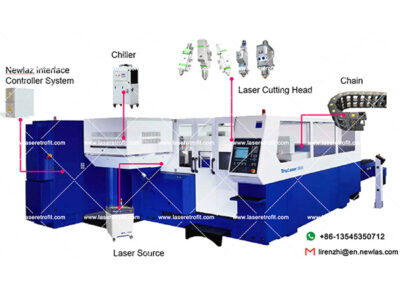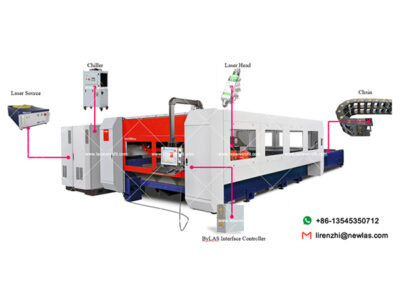Fiber Laser technology is the new standard. Fiber laser cutting solutions account for 80% of the sheet metal laser cutting market for steel, stainless steel, and aluminum, in 1/4″ thickness or less. Manufacturers currently using C02 profile cutting lasers are seeing many advantages in upgrading their existing CO2 lasers to a fiber; they achieve comparable cut quality and significantly higher cutting speeds for a fraction of the operation cost, reducing part cost and increasing profit!
Here are some advantages of cutting sheet metal with a fiber laser:
1. Operating costs decreased by 80%
The operating costs of fiber lasers are about 1/5 the cost of CO2 lasers. CO2 lasers require resonator gas and a series of optics and mirrors housed within a movable bellows to deliver the laser beam to the material, requiring significant maintenance to keep everything clean and in alignment. Fiber lasers are solid state, delivering the beam through a fiber-optic cable, so three are no mechanical components to maintain. The fact that fiber lasers have no moving parts means that your cutting machine is ready for operation from the start, with no misaligned components leading to costly downtime.
| Fiber Laser | CO2 | |
| Nozzles | √ | √ |
| Focus lenses | √ | √ |
| Chiller maintenance | √ | √ |
| Owner service labor | √ | √ |
| Electricity | √ | √ |
| OEM Service labor | √ | |
| Laser gas | √ | |
| Laser gas delivery system | √ | |
| Beam delivery maintenance | √ | |
| Resonator maintenance | √ | |
| Total cost : | $4/hour | $20/hour |
Fiber laser optics are much more efficient in terms of electricity, which means lower operating costs, up to 50% lower than CO2 lasers. The process of generating light is more efficient and less energy is wasted in heat. Because the fiber laser has fewer moving parts or mirrors when it comes to laser generation, unlike a conventional CO2 resonator, it will require less maintenance during its lifetime. The only regular maintenance to be done on fiber lasers are periodically replacing the nozzle, the protective lens cover and the water filter. These maintenance items are inexpensive and easy to perform. CO2 lasers are sensitive machines that require regular cleaning and alignment performed by an expert technician, resulting in long downtime and higher cost.
2. Cut up to 400% faster than a CO2
The wavelength of light produced by a laser has a big impact on how it cuts. A fiber laser has a wavelength shorter than a CO2 laser, thus producing a more closely focused spot. This allows it to cut thinner materials faster than a CO2 laser.
3. Can cut reflective metals
The wavelength also affects the type of metal a laser can cut. Copper, aluminum and brass are more reflective and absorb less light. As a result, the fiber has a distinct advantage in cutting these materials. Fiber lasers can cut these non-ferrous metals without having to worry about reflections that could damage the machine. Cutting aluminum, copper and brass is significantly improved with a fiber laser.
4. Compact
The fiber laser energy source and chiller are much smaller than comparable components on the CO2 laser, with all the assist gas pipes and pumps. The fiber laser takes up much less space than a CO2 laser of equivalent power.
Sweet spot – Replace CO2 or in addition to?
Fiber lasers excel over CO2 lasers in thinner materials, 1/4″ or less. Following the 80/20 rule, if a majority of your materials are thinner than 3/8”, then a fiber laser will likely provide a significant ROI. You can still cut thicker materials, up to 1” thick with a 6KW power supply, but you likely wouldn’t benefit from a fiber laser if you cut mainly thicker plate. If you cut equal parts thick and thin, and already own a CO2, then adding a fiber to handle the thinner material may still pencil out.
Newlaz focus on helping all the manufacturers to upgrade their Bystronic or Trumpf CO2 laser cutting machine. You want a machine that cuts high quality parts with minimal down time and so do we. We really DO care. Our retrofit solutions stands out for our service and support as well as our wide range of products that meet your requirement.






